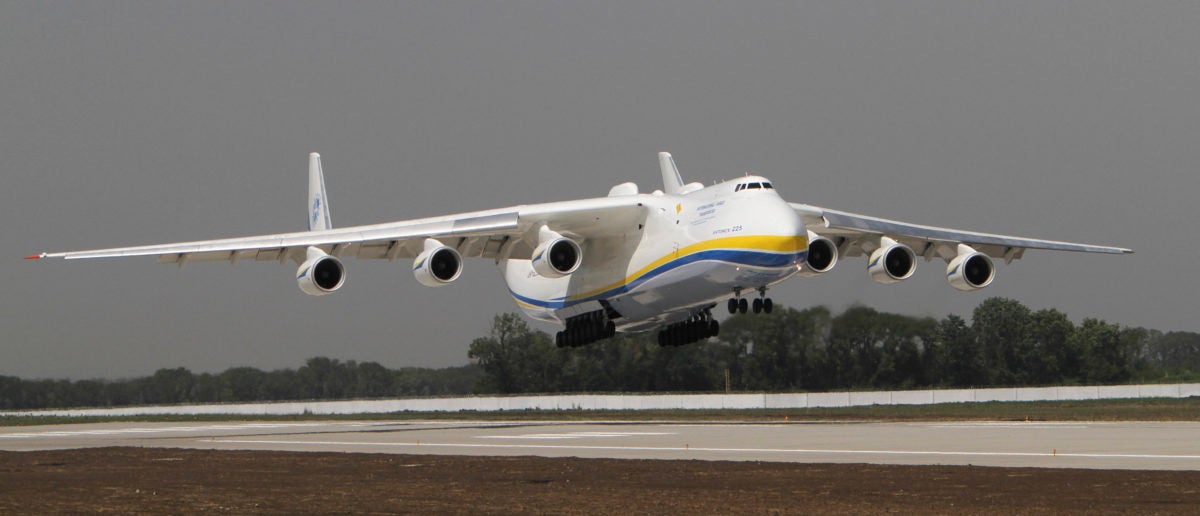This story originally appeared on flyingmag.com.
By Kimberly Johnson
Ukrainian aircraft manufacturer Antonov has announced it will rebuild the iconic An-225 Mriya, the world’s largest cargo airplane destroyed during Russia’s invasion of Ukraine.
Days after fighting began in late February, the iconic Soviet-era strategic airlift cargo airplane with the 290-foot wingspan was destroyed amid fighting at Gostomel Airport.
Antonov said this week it had collected nearly a third of the materials needed to rebuild the aircraft.
1/2 У викладенні інформації з посиланням на в.о. генерального директора ДП “АНТОНОВ” щодо побудови нової “Мрії”, поширеною виданням “Bild” та деякими українськими ЗМІ, була допущена неточність.
— ANTONOV Company 🇺🇦 (@AntonovCompany) November 7, 2022
Наразі розпочалися конструкторські роботи в цьому напрямку. pic.twitter.com/tfG9TF8vYm
“According to the available expert assessment, currently there are about 30% of components that can be used for the second sample,” the company said in a statement on Twitter on Tuesday. “The cost of building the plane is estimated to be at least 500 million euros. However, it is too early to talk about a specific amount. More information will be [available] after the victory.”
Initial reports suggested that construction of the new aircraft was 30% complete — a figure Antonov later corrected as representative of the components required to build, according to the Kyiv Independent.
“Work on the new machine is being carried out at a secret location,” Yevhen Havrylov, Antonov’s acting director general, said according to the Kyiv Independent on Monday. “The second An-225, which was never completed, will be supplemented with parts from the bombed machine and new parts.”
Earlier this summer, a former captain of the Mriya revealed details about plans to build a second version of the destroyed airplane. In a two-part interview released on Aerotime Hub, pilot Dmytro Antonov discussed how engineers would use an existing second fuselage of the An-225 to construct a complete airplane. He also offered reasons why the iconic type should return to the skies.
“Everybody knows that we are going to do it, no matter what,” Antonov said. “It is confirmed at the highest political level, so things are in motion.”

Mriya’s unique features
Built in the mid-1980s, the An-225 Mriya, or Dream, was a record breaker from the time it rolled off the production line, according to Simple Flying, and for good reason. In addition to being the heaviest aircraft in the world, the An-225 is known for having the largest wingspan and for carrying the longest piece of air cargo: two test turbine blades.
It had six engines, could carry 225 tons of cargo and consumed about 20 tons of fuel per hour of flight.
Antonov Airlines used the monster-sized aircraft for special moves, such as electric transformers or other massive equipment that couldn’t easily fit in its giant — but smaller — AN-124 freighters, or when using the An-225 was cheaper than two An-124s. Since the beginning of the pandemic, it has also transported humanitarian assistance and medical supplies such as personal protective equipment.
The An-225 holds aviation records for transporting the longest and heaviest cargoes, including a generator for a gas power plant that weighed nearly 419,000 pounds.
The cargo airline owns seven An-124s. Russian carrier Volga Dnepr also has a fleet of An-124 cargo jets and there are a handful of others with small operators. But there was only one An-225 in operating condition.
It was built in the late 1980s by Antonov Design Bureau in Ukraine to transport rocket sections for the Soviet space program, borrowing design concepts from the An-124, a military transport.
The An-225 and several An-124 planes ended up in private hands after the end of the Cold War. The Mriya had to be refurbished after several years of neglect before it took to the air again in 2001.
Eric Kulisch and Thom Patterson contributed to this article.












Joseph Adelman
Ain’t that the truth!!
Rich Holler
It would be a great thing to see here in the states. 👍